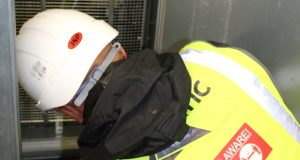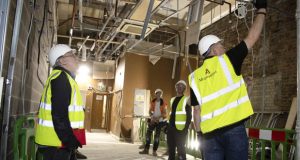The Science Based Targets initiative (SBTi) has launched a groundbreaking science-based decarbonisation framework for companies and financial institutions in the buildings value chain.
The framework sets 1.5°C-aligned emissions reduction targets for the buildings industry to overcome current climate challenges and create a net zero future.
The SBTi’s new Buildings Sector Science-Based Target-Setting Criteria takes a ‘whole building approach’ – covering all energy consumption and fugitive emissions (e.g. leakage) – to enable businesses to play their part in preventing the catastrophic impacts of climate change.
Four key actions for companies and FIs in the buildings value chain when following the criteria are:
- Stop fossil fuel installations: Public commitment to halting the installation of fossil fuel-based heating, cooking, power generation and hot water equipment from 2030 at the latest.
- Reduce in-use operational emissions: In-use emissions are those associated with a building’s energy use. The SBTi collaborated with the Carbon Risk Real Estate Monitor initiative (CRREM) to develop regional pathways for in-use emissions so that targets reflect variations in local power grids and how buildings are used.
- Reduce upfront embodied emissions: Global floor area is expected to grow ~15 per cent by 2030, nearly 80 per cent of which will be in developing economies. The criteria requires companies to set a target to reduce embodied emissions, i.e. those from raw materials, manufacturing, transportation and construction.
- Retrofit inefficient buildings: 80 per cent of current buildings are expected to remain standing until 2050. Retrofitting needs to more than double by 2030 to align with the IEA’s Net Zero by 2050 Scenario. The SBTi recommends companies commit to implement energy efficiency improvements to decarbonise old buildings.
Alberto Carrillo Pineda, Chief Technical Officer of the SBTi, commented: “This sector now has the tools to build towards net zero – companies and financial institutions must take immediate action. Decarbonising both old and new buildings is paramount to tackling climate change. We call on these businesses to lead the net zero transformation.”
The framework was developed in consultation with an independent Expert Advisory Group (EAG) made up of companies, financial institutions, non-profit and multilateral organisations. The process included a two-month public consultation and four-month pilot test in accordance with the requirements of the Standard Operating Procedure for Development of SBTi Standards.
Get a quick look at the pilot process in the feedback report here.
Frontline workers form the backbone of facilities management services, serving as the face of the brand and interacting directly with customers. Yet research by both L&G and the Living Wage Foundation reveals the majority feel overlooked and expendable.
Accelerating the problem is a growing technology gap. Despite having 2.7 billion deskless workers worldwide, representing 80 per cent of the global workforce, only one per cent of software and technology investments has been allocated to this segment. This means there is a huge disconnect between frontline workers and their headquarters, leading to lack of sufficient training, communication challenges and low employee retention.
For this webinar, FMJ has teamed up with frontline training platform Lingio to bring together a panel of experts, to discuss how easy-to-use and efficient AI tools can help create engaging and gamified learning experiences that fit the needs of underserved deskless workers. The result? Better software and learning experiences lead to improved staff engagement and reduced staff turnover by up to 95 per cent, according to McKinsey.
To register for the webinar taking place on 11 September at 11:00 am click here.





